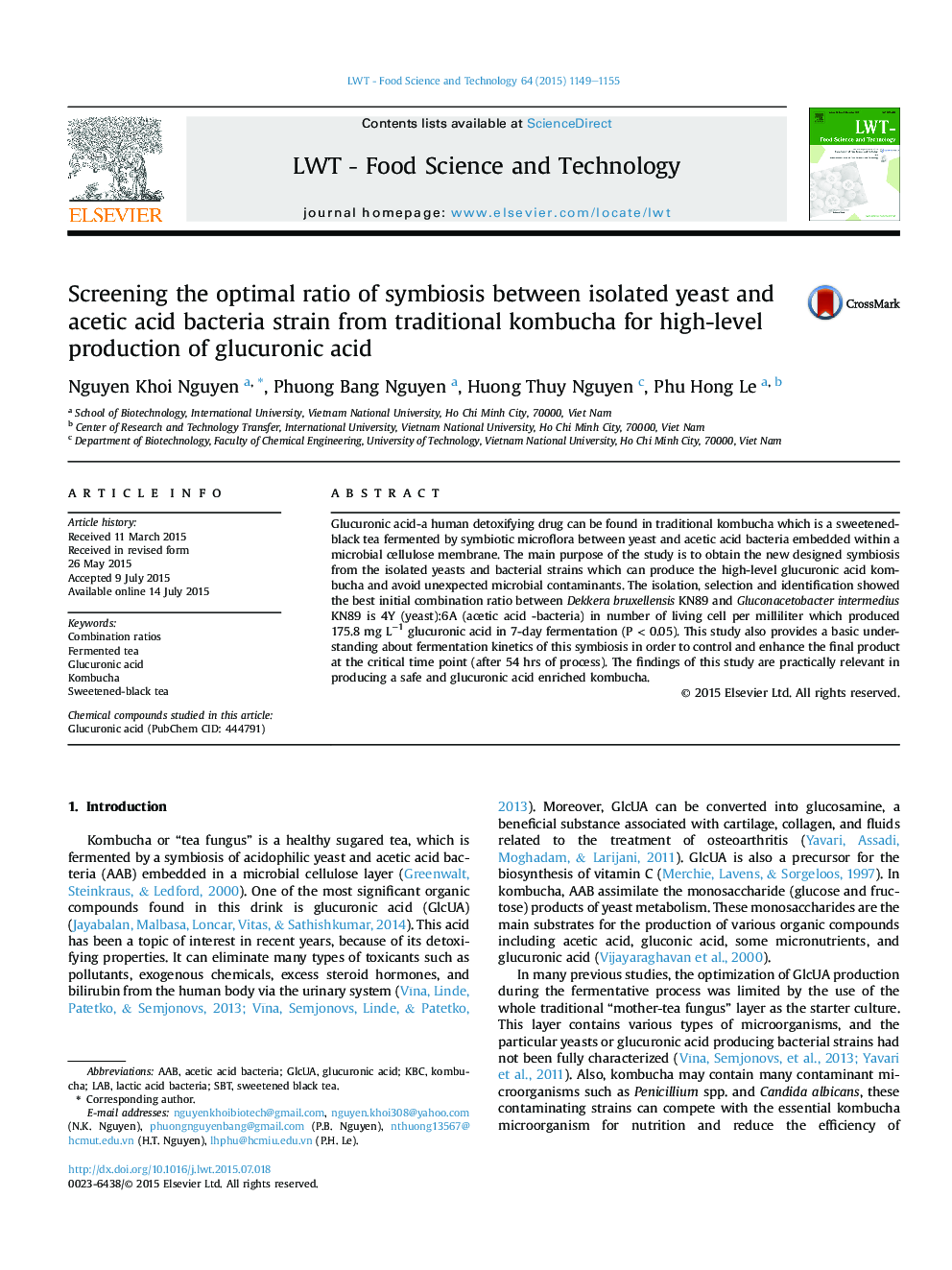| کد مقاله | کد نشریه | سال انتشار | مقاله انگلیسی | نسخه تمام متن |
|---|---|---|---|---|
| 6401939 | 1330884 | 2015 | 7 صفحه PDF | دانلود رایگان |
- Glucuronic acid has a detoxifying property against drug, bilirubin and chemicals.
- Traditional kombucha is a rich source of glucuronic acid.
- D. bruxellensis KN89 and G. intermedius KN89 were isolated from kombucha.
- New designed microbial symbiosis improved significantly glucuronic acid production.
- Using fermentation kinetics to increase final products.
Glucuronic acid-a human detoxifying drug can be found in traditional kombucha which is a sweetened-black tea fermented by symbiotic microflora between yeast and acetic acid bacteria embedded within a microbial cellulose membrane. The main purpose of the study is to obtain the new designed symbiosis from the isolated yeasts and bacterial strains which can produce the high-level glucuronic acid kombucha and avoid unexpected microbial contaminants. The isolation, selection and identification showed the best initial combination ratio between Dekkera bruxellensis KN89 and Gluconacetobacter intermedius KN89 is 4Y (yeast):6A (acetic acid -bacteria) in number of living cell per milliliter which produced 175.8 mg Lâ1 glucuronic acid in 7-day fermentation (P < 0.05). This study also provides a basic understanding about fermentation kinetics of this symbiosis in order to control and enhance the final product at the critical time point (after 54 hrs of process). The findings of this study are practically relevant in producing a safe and glucuronic acid enriched kombucha.
Journal: LWT - Food Science and Technology - Volume 64, Issue 2, December 2015, Pages 1149-1155
